Discover which fast-growing vine is best for your garden this season.
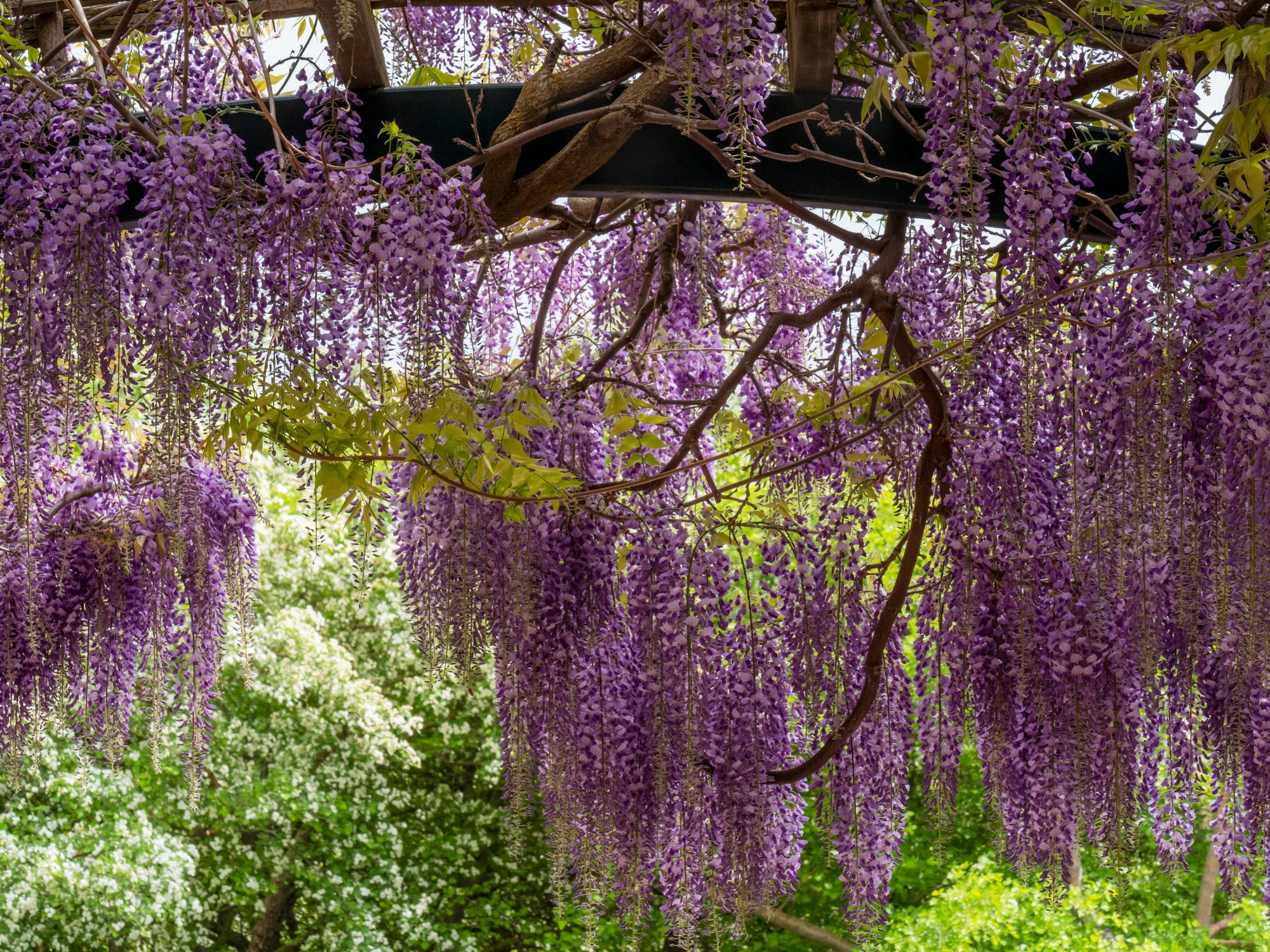
10 Fast-Growing Vines to Transform Your Landscape Quickly

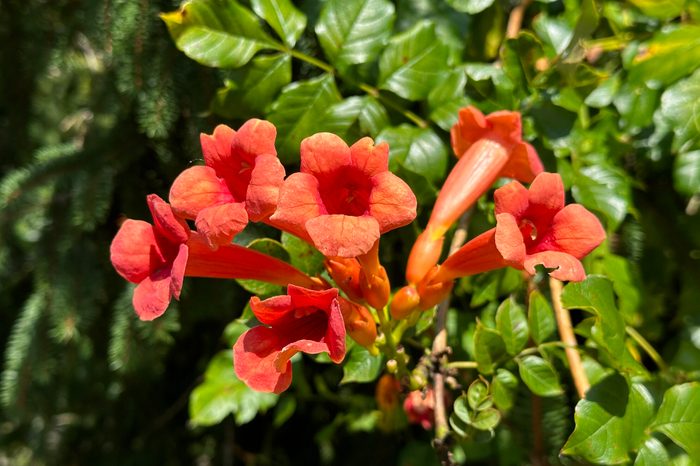
Trumpet Vine
Trumpet vine grows quickly and prolifically within a single season, producing bright orange flowers that resemble trumpets. They are very resilient, and “attract hummingbirds and pollinators with its bright orange flowers,” Singh says.
- Zone: 4 to 9
- Size: Trumpet vine can grow 30 to 40-ft. tall on a supportive structure, and 4 to 10-ft. wide.
- Care: This fast-growing vine does best in full sun, in all soil types. Occasional watering during dry weather may be needed. A low-maintenance plant, trumpet vines do need pruning. “As a fast-growing vine it can become a bit aggressive and may not be a good fit for small properties,” Singh says. “Prune regularly to control its rapid spread.”
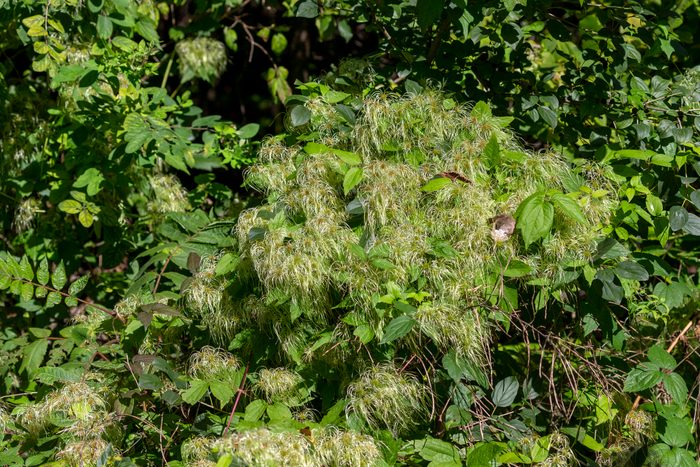
Virgin’s Bower
“This fast-growing, fragrant vine produces clusters of delicate white flowers in late summer, attracting pollinators,” Singh says. “It climbs fences, trellises, or shrubs naturally and requires minimal pruning.”
- Zone: 3 to 9
- Size: Virgin’s Bower can grow 10 to 20-ft. tall on supportive structures like trellises, fences or pergolas.
- Care: Virgin’s Bower can grow in full sun to partial shade and prefers moist, well-drained soil. “They do prefer a bit of shade throughout the day, especially over the roots,” Schmitz says. He suggests planting something around the base to shade the ground. This clematis variety also needs a support structure or space to scramble along the ground. Prune back hard in the fall (8 to 12-in. from the ground) after flowering is finished and lightly through the growing season to control its shape.
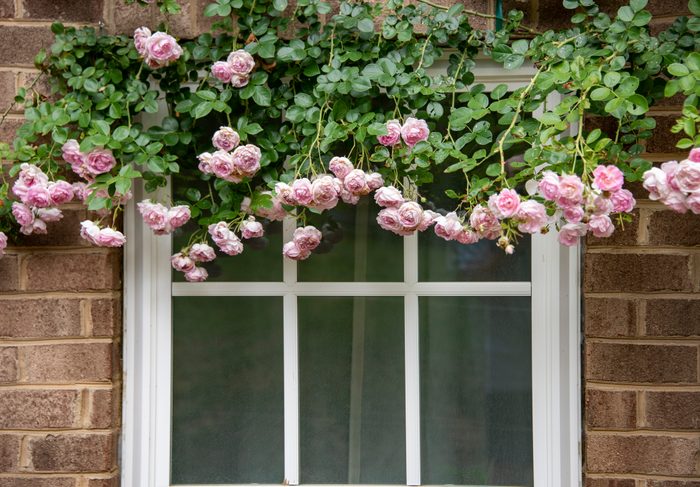
New Dawn Rose
This fast-growing climbing rose is easy to train up trellises and across fences. It’s soft, pale pink flowers will continuously bloom all season long with proper care.
- Zone: 5 to 9
- Size: New Dawn roses will grow 10 to 20-ft. tall and 10-ft. wide.
- Care: Plant New Dawn roses during early spring in well-drained soil where they will receive full sun each day. Deadhead periodically through the growing season from June to September and regularly water for best performance, up to 1-in. per week. You will need to train this climbing rose onto a trellis, and it will “need to be loosely tied to establish growth habits and structure,” Schmitz says. It will also need fertilizer. “An even formulation fertilizer applied in the spring as new growth begins would be beneficial for this plant,” Schmitz says.

American Wisteria
Native to the Southeastern United States, American wisteria is a fast-growing vine producing striking flower clusters that bloom in late spring to early summer. Ranging from dark purples to lavender or white, the flowers can be 6 to 12-in. long with a sweet scent that attracts pollinators. “[It’s] one of the most gorgeous vines there is,” Schmitz says.
- Zone: 5 to 9
- Size: American wisteria can grow up to 25-ft. tall on supportive structures.
- Care: American wisteria likes slightly alkaline, well-draining loam and at least six hours of sun each day. While less aggressive than others types of wisteria, it will still need pruning to keep it contained. “Judicious pruning and training are needed when the vine is young and still becoming established,” Schmitz says. “Once mature, vines may be pruned quite heavily, leaving only a few buds on the side branches.”
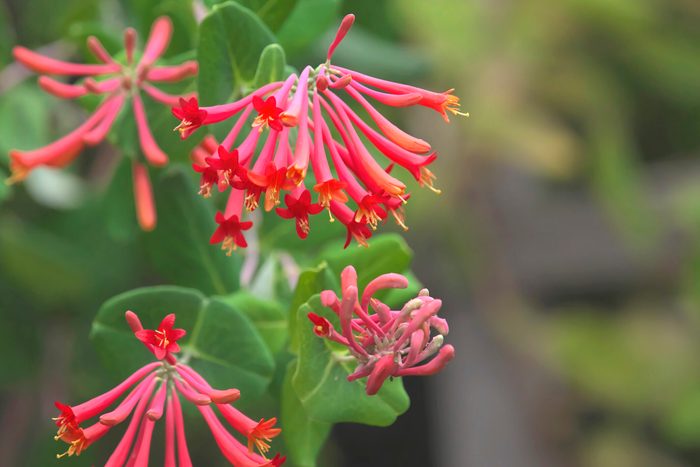
Honeysuckle
“Native honeysuckle [has] vibrant red-orange blooms that attract pollinators,” Singh says. “[It’s] great for hummingbirds and recommended for beginners because it’s not an aggressive vine.” Honeysuckle has a sweet scent and its clusters of tubular flowers bloom in late spring to early summer.
- Zone: 4 to 9
- Size: Vining honeysuckle can grow 15 to 30-ft. tall on trellises or pergolas, and 3 to 6-ft. wide.
- Care: Honeysuckle prefers moist, well-draining soil and at least six hours of sunlight each day. Prune and shape in late winter or early spring to remove dead vines and thin overcrowded areas. Apply a slow-release fertilizer in the spring and water regularly during dry weather. Deadheading spent flowers can encourage a longer blooming time.
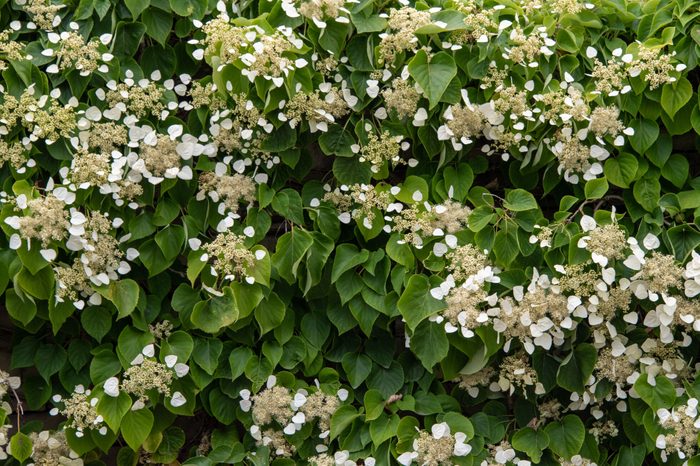
Climbing Hydrangea
This unique climbing vine can produce a living wall effect when trained on trellises and walls, with its woody vines and abundant greenery. Producing elegant clusters of white, lace cap flowers in early summer, climbing hydrangea has a striking appearance when in full bloom. While it is slow to start, once established it grows quite quickly.
- Zone: 5 to 8
- Size: 15 to 30 feet when supported
- Care: Like all hydrangeas, climbing hydrangea prefers partial shade, especially in warmer climates. Plant in neutral pH, well-draining soil and water the base deeply during dry weather. Prune in late summer or fall, after blooming has passed to shape or reign in unruly growth. Apply a slow-release, balanced fertilizer like 10-10-10 in early spring.

Bougainvillea
Native to South America, bougainvillea is best known for its vibrant colors. Instead of true flowers, bougainvillea produces colorful bracts, or modified leaves, in red, purple, white, orange or yellow. This versatile plant can be trained as a vine or shrub and can grow in containers or in the ground.
- Zone: 9 to 11
- Size: Depending on the variety, bougainvillea can grow up to 40-ft. tall on supportive trellis and 20-ft. wide.
- Care: Plant bougainvillea in direct sun, as the more sun it receives, the better it does. Drought resistant, it requires little watering and well-draining soil, but does prefer to be protected from winds. A balanced, slow-release fertilizer in spring should be all this plant needs for the growing season. Prune in early spring to shape and control plant size, as it can get quite large.
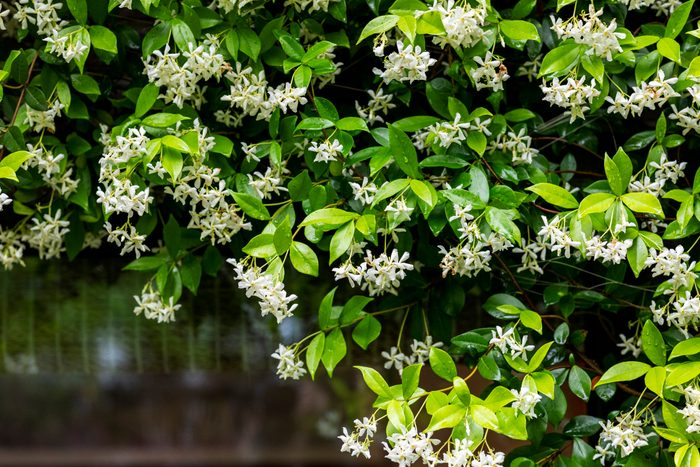
Star Jasmine
While not a true jasmine, star jasmine is a perennial, evergreen vine known for its fragrant, star-like blooms and glossy, dark foliage. This plant loves heat and humidity, so is only found in warmer climates, where it blooms in late spring to early summer. While a fast-grower once established, growing up to 6-ft. per year, the first two years after being planted will have little to no growth.
- Zone: 8 to 11
- Size: When trained as a vine, star jasmine can grow to heights of 10 to 15-ft. and 3 to 6-ft. wide.
- Care: Plant star jasmine in full sun to partial shade in neutral pH, well-draining soil. This plant likes the heat and humidity, so in drier climates, provide a bit more water. A forgiving and versatile vine, star jasmine will still need fertilize once or twice a year in early spring and mid to late summer after it starts blooming.
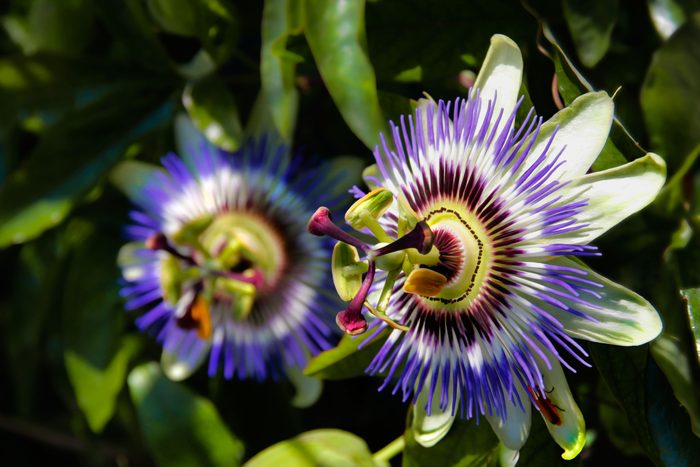
Passion Flower
This easy-to-grow vine produces visually-interesting, multi-layered flowers that bloom from late spring to fall, with a peak in summer. Suitable for warm climates only, it is a vigorous climber with large, heart-shaped leaves. It also produces a small, edible fruit that attracts birds and can be used in passion fruit drinks or tea, according to Singh.
- Zone: 9 to 11
- Size: Passion flower vines can reach heights of 10 to 30-ft. when supported on trellises.
- Care: Plant passion flower in well-draining soil where it will get at least six hours of sunlight each day. While drought resistant, this fast-growing vine will need to be watered during hot, dry summer months. Flowers may take one to two growing seasons to appear on established plants. Additionally, this plant “requires support for climbing and can spread aggressively because it spreads underground,” Singh says, so consider growing this in a large container to control spread.

Virginia Creeper
A prolific and aggressive climber, Virginia creeper produces five serrated-edge leaf clusters that resemble a star. The leaves are green throughout the season, then turn a deep red or burgundy in the fall. It produces small, white flower clusters in the spring, but the real draw is the foliage.
- Zone: 3 to 9
- Size: Virginia Creeper can grow 30 to 50-ft. tall and 10 to 20-ft. wide if left unchecked.
- Care: While this fast-growing vine prefers well-draining soil, it is quite adaptable to a variety of soil types. Drought tolerant, it will require some watering while still becoming established. Pruning is critical when deciding to plant Virginia Creeper, and it will need regular attention throughout the season. You can use in-ground barriers to contain runners or manually pull up unwanted growth, but this plant can quickly take over if left unattended.
FAQ
What are the best vines for pergolas?
“For a pergola, twining vines and those with tendrils are the best choices, as they naturally wrap around supports, while clinging vines can damage structures,” Singh says. Some of her suggestions include cross vine, honeysuckle and dutchman’s pipe.
What are the easiest vine plants to grow?
Some of the easiest vines to grow honeysuckle and Virginia creeper, each for different reasons. Honeysuckle is very low-maintenance and easy to contain. Virginia creeper is hardy and durable in a variety of environments, according to Singh.
How do you grow vines on the exterior of your house?
Start by attaching a sturdy trellis to your home’s siding to prevent damage. Plant a non-damaging vine that won’t harm brick, wood or siding. Singh suggests trying honeysuckle, American wisteria and carolina jessamine that each lack aggressive roots or tendrils. Avoid English ivy for this reason. Prune vines regularly to keep them out of windows or gutters. Choose the side of your house that produces the best lighting conditions for your vine. For example, plant sun-loving vines on the south side of your home.
How do you remove vines?
First, cut back any vegetation and above-ground growth. Then, either manually dig up root and rhizome underground systems to remove, or use a chemical herbicide treatment to kill the remaining plant. Wearing protective gloves and eyewear, apply herbicide to freshly cut vegetative stems or vines.
Is there a vine that stays green all year?
In warmer climates, plant carolina jessamine, passion flower, climbing hydrangea or star jasmine for evergreen foliage. In colder climates, English ivy can withstand mild winter temperatures.
About the Experts
- Trisha Singh is the Vice President of Product at Garden for Wildlife, a program run by the National Wildlife Federation, which encourages wildlife-friendly gardening spaces. Trisha is a wildlife biologist who enjoys native plant gardening and helping to support others in their native gardening pursuits.
- Samuel Schmitz is a full-time faculty instructor in the Horticulture Department at Triton College in Illinois. He was formerly Ground Operations Supervisor for Ball Horticultural Company for 16 years.




















